
Ontario’s Bill 5 sparks new concerns where a legacy of environmental damage remains
The Protecting Ontario by Unleashing Our Economy Act exempts industry from provincial regulations — putting...
At first glance, the Rocky Mountains of British Columbia and Alberta are nearly indistinguishable. Spectacular ridgelines. Snow-covered peaks. Tens of thousands of years of glacial sculpting. The two provinces’ shared border straddles the same iconic mountain range and the same rich coal deposit that lies beneath.
“We’re talking about basically the same stuff in a very similar mountain environment,” Harvey Locke, co-founder of the Yellowstone to Yukon Conservation Initiative, told The Narwhal.
But what the two provinces don’t share is their policies on coal mining.
While Alberta is a coal-rich province (nearly half of the province sits atop coal deposits), B.C. produces some ten times the volume of metallurgical coal — much of it from massive mountaintop-removal coal mines in the Rockies — and is one of the world’s largest exporters of the so-called black gold. Coal is B.C.’s most valuable mined commodity.
So when Albertans of all political stripes reacted with outrage to the United Conservative Party government’s plan to open up much of the eastern slopes to open-pit coal mining, coal mining in B.C.’s Rocky Mountains carried on, business-as-usual, just across the border.
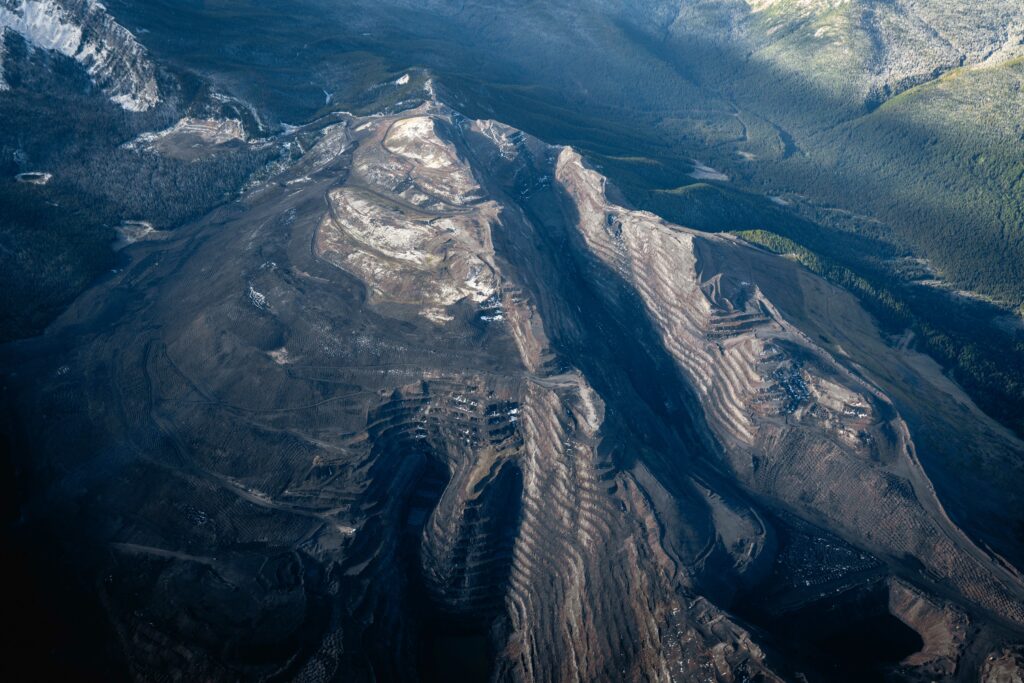
A mine in B.C.’s Elk Valley. Teck Resources owns and operates a number of metallurgical coal mines in the region that provide coal for use in steelmaking. Photo: Callum Gunn
“To understand why this happened in Alberta and not in British Columbia … you have to set aside some conventional understandings of the left and the right, and where they are on conservation issues,” Ian Urquhart, professor emeritus of political science and conservation director at Alberta Wilderness Association, told The Narwhal.
And in a province long known for its resource-driven economy and its political leaders donning “I heart oil” ball caps and “I heart pipelines” bumper stickers, a history of a devout conservation ethic might come as a surprise to some.
“Even though it’s typically perceived as a laggard on environmental issues, public concern about the environment was a big deal in Alberta in the late 1960s and early 1970s,” Liza Piper, an environmental historian and associate professor at the University of Alberta, told The Narwhal via email.
The two provinces “share a similar history from the late 1800s to the mid 20th century” when it comes to coal mining, according to Randal Macnair, the Elk Valley conservation coordinator with Wildsight.
“Then around the 1960s, things started to change.”
In the late 1970s, Alberta Premier Peter Lougheed set about explaining to Albertans why his government had restricted coal mining in much of the eastern slopes of the Canadian Rockies in his landmark 1976 coal policy.
Coal mining, he said in a 1977 interview, had “serious environmental problems.”
“Most of it is located in some of the beautiful parts of our province and would affect our potential for recreation and tourism,” he added.
Tourism and recreation in the Rockies had expanded after the Second World War, according to Piper. At the same, surface coal mining became much more prevalent. And large surface coal mines posed a greater conundrum for policy makers, Piper added, because “surface mines aren’t compatible with expectations of mountain wilderness.”
This rationale formed the backdrop of the 1976 coal policy, which restricted surface coal mining in much of the eastern slopes.
Meanwhile, in B.C., coal mining in the Rocky Mountains was being approached with a very different attitude.
In 1979, B.C. premier William (Bill) Bennett announced a new plan to drum up support for his province’s resource sector. Bennett, a pro-coal leader of the Social Credit Party, announced that any B.C. resident — including babies — would be eligible for five free shares in the Crown-owned B.C. Resources Investment Corporation (each share was valued at $6 at the time). Shareholders would earn dividends on government-owned resource companies, including metallurgical coal mines. The scheme ultimately failed — though not until more than 97 per cent of British Columbians had applied for their free shares.
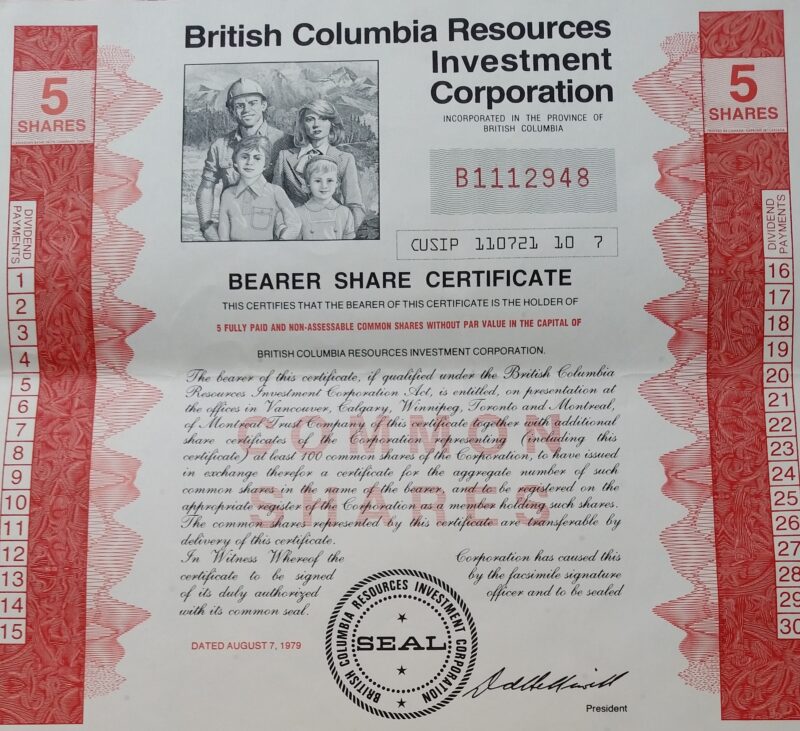
A share certificate issued by the B.C. Resources Investment Corporation in 1979. Photo: Wontonimator / Wikimedia Commons
“Talk about a vested interest,” Allen Seager, a retired associate professor of history at Simon Fraser University and a coal historian, told The Narwhal. “If this plan had worked out, every single British Columbia voter would have been a stockholder in a coal company.”
It was “so emblematic of a Bennett idea,” said Seager, who described it as “a grand vision [for coal], with billions of dollars at stake.”
These two divergent policies set the stage for the tale of two neighbouring provinces and their vastly different approaches to coal.
In one, the government was openly supportive of the metallurgical coal industry. In the other, a myriad of values — including environmental values — were coming together to stifle the industry.
The two provinces weren’t always so different.
“There’s a lot of similarities in the [early] history of coal mining in the Rockies in B.C. and Alberta,” Piper told The Narwhal. “Underground mining dominated in the early 20th century and was essential to the railways and industrialization in both provinces up to the 1950s.”
Coal mines flourished on the Alberta side of the border in the Crowsnest Pass, Nordegg and even right in Canmore around the same time coal mines cropped up in B.C., in the Elk Valley and in towns like Tumbler Ridge.
Buoyed by the post-war boom in the middle of the 20th century, the metallurgical coal industry took off as both provinces fed an international appetite for steel, particularly in Japan.
The Government of Canada even subsidized railway transport of metallurgical coal — also known as steel-making coal — for eventual export to Japan in the early 1960s, according to Seager.
But a push for economic expansion wasn’t the only pressure facing governments at the time. By the 1970s, two new phenomena had taken root in Alberta: an oil rush and a fledgling environmental movement.
“At the same time that the [coal] industry was reaching new production heights in the early 1970s, a new environmental consciousness had taken hold in Alberta,” Piper wrote in a paper in the journal RCC Perspectives: Transformations in Environment and Society.
That momentum gave the government leverage to create a new body within the Alberta government.
“In 1970 you had something that was unprecedented in Canada, and that was [Alberta’s] Environment Conservation Authority,” Urquhart told The Narwhal. That body, according to the province’s archives, was “responsible for conducting continual reviews of policies and programs of the government and government agencies on matters pertaining to environment conservation.”
In essence, the body “did research, talked to Albertans, and told governments what Albertans thought about these landscapes,” Urquhart said, “And it had an effect on policy.”
Part of its work revolved around coal in the Rockies.
The Alberta coal policy, said Yellowstone to Yukon’s Locke, stemmed from the “massive review of how to manage the eastern slopes” in the early 1970s.
And with the policy, the Alberta government signified it was ready to leave new coal mining in the Rockies largely behind (though some pre-existing mine sites could still be developed). According to Piper, “Alberta turned its attention to surface mining for coal on the plains, choosing instead to protect foothill and mountain environments.”
The coal industry was not pleased with the policy.
R.N. Sanders, then the president of Alberta-based Manalta Coal, once Canada’s largest coal producer, told the Edmonton Journal in 1977 that “the Alberta government’s new coal policy is unattractive and takes a hard line on future coal development.”
“There would appear to be no particular desire on the part of the government for major new coal developments at this time,” he added.
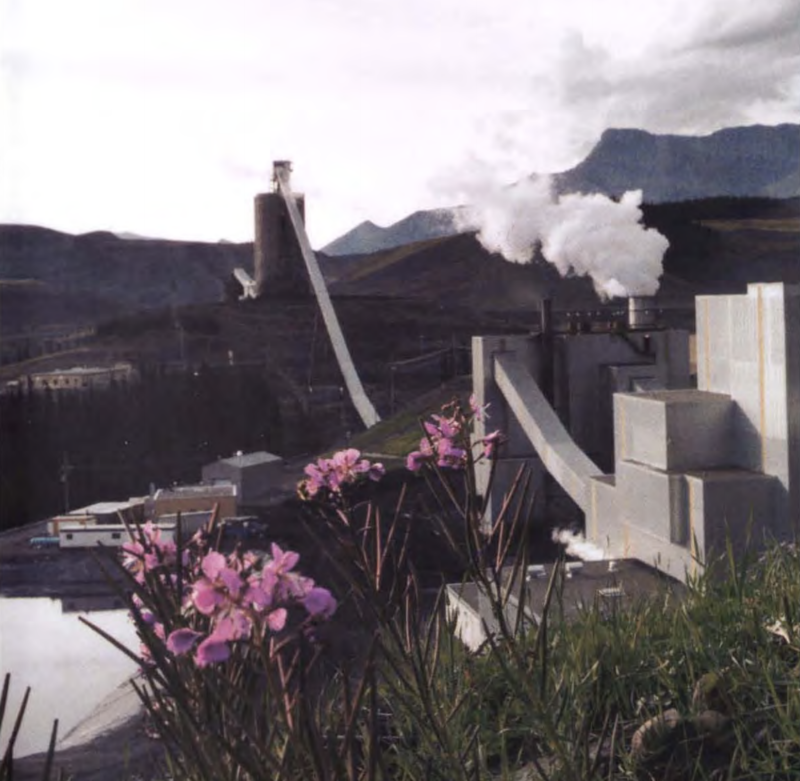
The Gregg River mine near Hinton, Alta., along the eastern slopes of the Rockies, was owned by Manalta Coal before being acquired by Luscar in 1998. The mine closed in 2000. While reclamation work is considered finished, unreported government data of water samples in Gregg River showed that selenium was detected at levels beyond what is considered safe for aquatic life. Photo: Manalta Coal
It wasn’t just a newfound eco-consciousness or a conservation ethic that prompted Alberta’s approach.
Coal was also fast becoming second fiddle to another industry in the province. According to the Government of Alberta, coal was the “the primary source of energy until the late 1960s when it was overtaken by oil.”
“In Alberta, to an extent, the future was seen as a future driven by oil and gas exploration and coal was not really part of that picture,” Urquhart, the retired political scientist, told The Narwhal.
“A value judgment was made that oil was a more valuable resource to be developed,” Locke said.
And that left coal companies feeling left out.
The president of Coleman Collieries, once a major mining operation in southwestern Alberta, said the coal policy was “restrictive and seems to give coal development a lower priority than other types of industrialization in Alberta,” according to a October 1976 article in the Edmonton Journal.
Around that time, Alberta was in the middle of building a massive oil industry. In 1967, the first commercial production of oil began in the Alberta oilsands in the Great Canadian Oil Sands mine. At the same time, thermal coal production — coal used for domestic electricity generation — was being developed in the plains of Alberta.
Metallurgical coal companies threatened to leave. Sanders told the Edmonton Journal that Manalta Coal was looking instead to B.C., where the government “exhibits a bullish attitude towards future coal developments and provides an excellent framework for revitalizing the industry.”
An executive at another coal company elaborated. “British Columbia’s policies and royalties are much less restrictive,” Glen Simpson of Cyprus Anvil Mining told the Edmonton Journal in December 1976.
“Maybe,” he said, “we’ll have to switch horses.”
In B.C., metallurgical coal mining was booming through the 1970s. “B.C. has continuously encouraged coal mining in the Elk Valley,” Macnair told The Narwhal.
“Up to about 1914 or thereabouts, there was a kind of hum of development on both sides of the border,” Seager explained.
Even in the early days though, B.C. coal producers had an advantage.
Not only did B.C. have a more pro-coal stance in government, it also had access to ports and, historically, local metal-refining facilities with an appetite for coal, like what is now the Teck Resources facility in Trail. Metallurgical coal was made into coke at coke ovens across the province.
Alberta’s metallurgical coal production couldn’t rival that of its neighbour to the west. “Their annual production was just miniscule compared to the B.C. mines,” Seager told The Narwhal.
That still rings true today.
Alberta produced 2.7 megatonnes of metallurgical bituminous coal in 2019, according to the province’s energy regulator.
Meanwhile, in B.C., Teck alone produced 25.7 megatonnes of metallurgical coal in 2019 at four mines in the Elk Valley in the southeastern corner of the province. These four mines produced more than 80 per cent of Canada’s total annual metallurgical coal exports.
According to the B.C. government, “coal remains British Columbia’s most valuable mined commodity.” Between 80 to 90 per cent of the coal produced in the province is metallurgical coal.
The industry has come with numerous jobs, but also with environmental costs. Selenium pollution, a decades-old problem in the Elk Valley, has contaminated rivers in both the United States and Canada, resulting in concerns about drinking water and deformed fish.
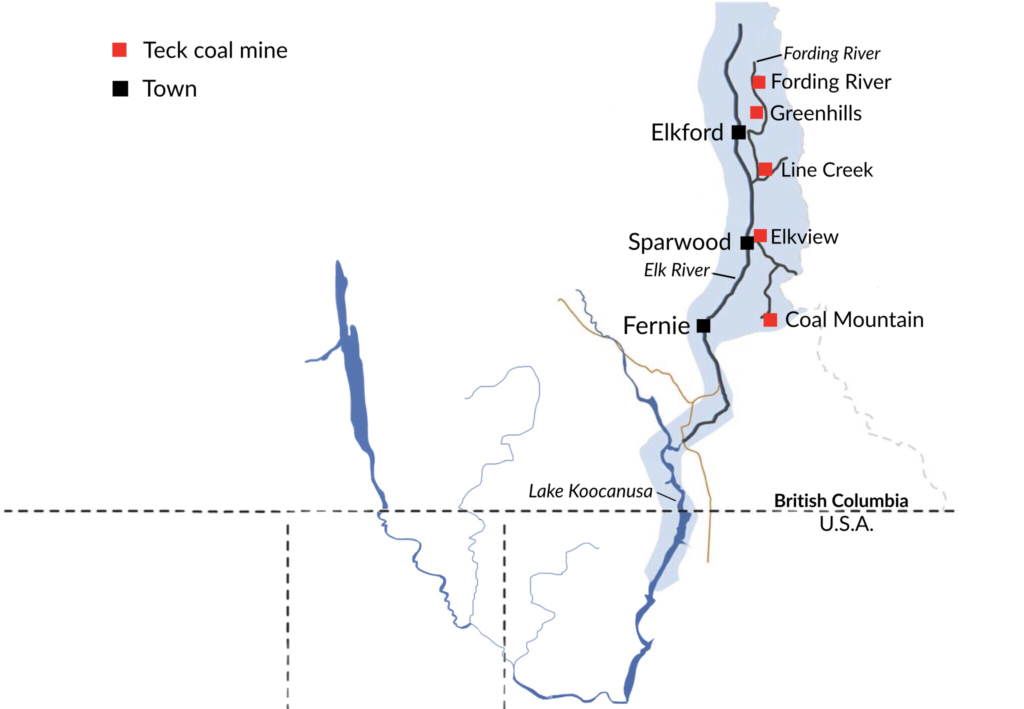
Teck’s metallurgical coal mines are all upstream of the transboundary Koocanusa Reservoir. Map: Carol Linnitt / The Narwhal
Fast-forward to today, and the dichotomy between the two provinces continues. Mountaintop-removal mining continues on one side of the border, albeit with growing concern, while an uproar about the possibility of any new mines engulfs the other.
Piper, the associate professor of history, said some of the difference in values can be attributed to the proximity of the Rockies to the province’s major urban centres. “Vancouverites don’t feel about Yoho the way that people in Edmonton and Calgary feel about Jasper and Banff,” they said.
And that can be traced to closeness, or a lack thereof.
“The big difference is that while the Elk Valley is 1,000 kilometers from Vancouver, the Canadian Rockies are right beside and play a central role in the lives of most Albertans,” Locke said. Not only that, they are home to the headwaters of much of the population’s drinking water.
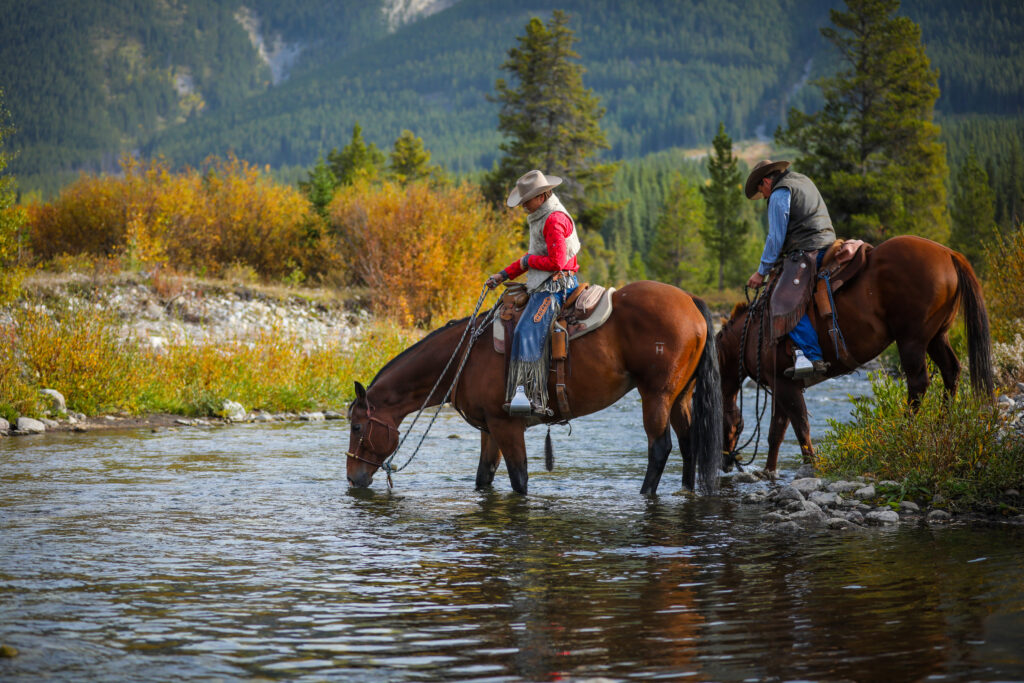
Ranchers in Alberta fear contamination of water if coal mining plans go ahead. Photo: Leah Hennel / The Narwhal
The Rockies are also more unique in Alberta’s landscape, Macnair said.
“B.C. is different from Alberta, in that we have mountains everywhere,” he said. “Whereas Alberta just has the Rockies. And so the Rockies are more ingrained into the Albertan sense of identity.”
Urquhart echoed that sentiment. “The eastern slopes are an iconic landscape that rests at the heart of what the Alberta identity is about,” he said.
Locke pointed to the level of protection enforced on either side of the border as indicative of these values. “Alberta’s Rocky Mountains are infinitely more protected than British Columbia’s Rocky Mountains,” he said. “Just look at a map of protected areas on the Alberta side and the B.C. side.”
Locke also pointed to local politics as having played a role. “The politics of B.C. have always been green on the coast and brown on the interior,” he said. That’s left areas far from the coast less at the forefront of environmental agendas.
At home in B.C.’s Elk Valley, Macnair reflects on the area’s reputation as “the forgotten side of the border” when it comes to environmental protections.
“It really feels that way,” he said.
“We’re out of sight, out of mind.”
Get the inside scoop on The Narwhal’s environment and climate reporting by signing up for our free newsletter. On a warm September evening nearly 15...
Continue reading
The Protecting Ontario by Unleashing Our Economy Act exempts industry from provincial regulations — putting...

The Alberta premier’s separation rhetoric has been driven by the oil- and secession- focused Free...

Canada’s first-ever Indigenous governor general doesn’t play favourites among our majestic natural wonders, but she...
